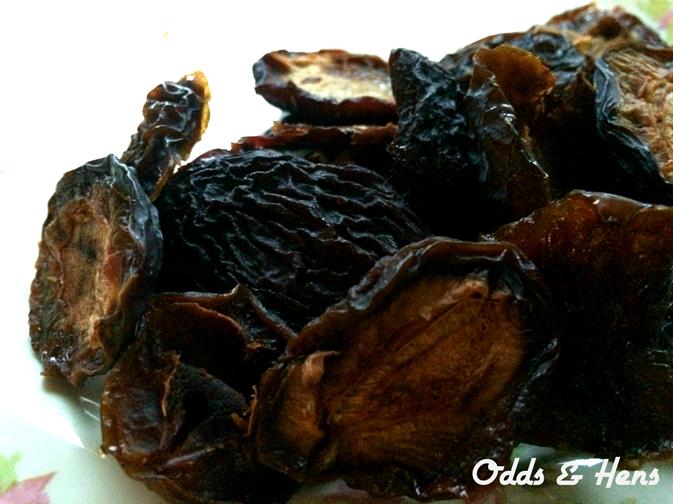Crack, definitely crack (it’s not whack) your plums before placing them in the dehydrator. But first, please accept the fact that dried plums are not prunes. They are amazing; no weird texture or strong taste. Drying is an excellent way to preserve a bumper crop of plums for the long winter months. Sweet bites!

What is cracking? Basically, blanching but also known as checking. The intention is to break down the touch skins with a waxy-like coating to make for faster dehydration. Cracking is achieved by dipping or placing the whole fruit (such as plums, prunes, grapes, figs, cherries) into boiling water for 30 to 60 seconds then place, run under or dip into cold water to stop any cooking. You might do this same thing when making tomato sauce and removing the skins. You do not need to or probably want to remove the skins for making sweet little dried plums. Cracking shortened drying time by at least 8 hours, for a total drying time of about 20 hours for plum halves.
Here is a pile of cracked/checked plums from the backyard destined for the Snackmaster

Other tip for drying plums (that I did not do) is to place them skin side down for easier removal. In addition, you can pretreat the fruit with lemon juice. I did not this time around to no apparent detriment.
Can you spot the uncracked plums?

Other Plum Ideas:


2 thoughts on “Dried Plums : To Crack or Not to Crack”